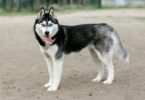What if a tiny dog could combine fearless confidence with unwavering affection? Meet the Chihuahua Shih Tzu mix—a spirited companion that challenges stereotypes about small breeds. This designer dog merges the boldness of one parent with the gentle charm of the other, creating a loyal friend perfect for modern lifestyles.
Often called a “designer breed,” this cross has surged in popularity for its dynamic personality. Owners love their adaptability to apartments and minimal exercise requirements. Despite their compact size, these dogs pack energy, intelligence, and devotion into every wag.
Their lineage blends two iconic breeds. One contributes a spunky, protective nature, while the other adds a calm, people-pleasing demeanor. The result? A playful yet low-maintenance pet that thrives in cozy homes. Their expressive eyes and soft coats make them irresistible to families and singles alike.
Ready to explore what makes this hybrid unique? From grooming tips to health insights, we’ll guide you through everything needed to nurture these charismatic companions. Let’s uncover why they’re winning hearts nationwide.
Getting to Know Your Chihuahua Shih Tzu Mix
This spirited crossbreed brings together two distinct personalities in one compact package. Developed as a designer companion, it typically stands 9-12 inches tall and weighs 9-16 pounds—ideal for apartment living. Their coats vary from silky to wiry, often showcasing cream, black, or golden hues.
Breed Overview and Quick Facts
Created by blending energetic and affectionate parent breeds, this hybrid thrives on human interaction. Many inherit the alertness of one lineage and the gentle demeanor of the other. Regular brushing prevents matting in their medium-length fur, which may shed moderately depending on coat type.
Key Characteristics at a Glance
These dogs balance playful curiosity with loyal protectiveness. Common health issues include dental concerns and patellar luxation, requiring consistent vet checkups. Daily walks and puzzle toys keep their sharp minds engaged.
Prospective owners should make sure they’re prepared for moderate grooming needs and potential stubbornness during training. Their adaptability makes them excellent companions for singles and families alike when socialized early.
History and Origins of the Chihuahua Shih Tzu Mix
Behind every great companion lies a story of two worlds colliding. This hybrid’s lineage stretches across continents, blending ancient royalty with working-class grit. One parent traces back to pre-Columbian Mexico, revered as spiritual guardians. The other hails from Tibetan monasteries, later cherished by Chinese emperors as living treasures.
Parent Breed Influences
The Mexican-born ancestor brought fearless confidence and compact size—traits perfect for alert watchdogs. Meanwhile, the Asian counterpart contributed a regal posture and affectionate nature. These contrasting breed qualities create a dog that’s both spirited and adaptable.
The Emergence of a Designer Breed
This mix gained traction during the 1990s designer dog boom. Breeders sought to combine the best qualities of both parent breeds while minimizing health issues. Though intentional crossbreeding began recently, their popularity skyrocketed for apartment-friendly companionship.
Today’s hybrids often showcase one parent’s traits more prominently. You might see the domed skull of the Mexican lineage or the flowing coat of imperial ancestry. Understanding these origins helps owners appreciate their pet’s unique quirks and care needs.
Distinct Physical Characteristics and Appearance
This pint-sized companion stands out with features that blend its parent breeds’ best traits. Measuring 9-12 inches tall and weighing 9-16 pounds, their compact frame suits urban living while maintaining balanced proportions. Their structure often showcases a sturdy build with either a slightly domed skull or rounded head shape.
Size, Coat, and Color Options
The dog’s size makes it ideal for lap cuddling and easy transport. Most display short to medium-length fur that ranges from silky smooth to softly wavy. Common colors include cream, chocolate, and black—often mixed in striking patterns like brindle or parti-color.
Expect seasonal shedding with this hybrid. Weekly brushing keeps their coat tangle-free and reduces loose hairs around your home. Some inherit a double-layered fur coat requiring extra attention during grooming sessions.
Unique Features to Look For
Watch for expressive eyes that range from dark brown to hazel, framed by either perky ears or gentle folds. Many develop a distinctive underbite that adds to their charming facial expressions. The tail often curls over the back when alert, showing off their playful energy.
Paws remain small but sturdy, supporting quick movements during playtime. Look for a slightly longer body compared to leg length—a trait helping them navigate tight spaces effortlessly. These physical quirks make each dog wonderfully unique while maintaining breed-typical charm.
Understanding Chihuahua Shih Tzu Mix Temperament
Ever met a dog that’s both your shadow and your independent thinker? This crossbreed’s personality thrives on emotional contrasts—deeply affectionate yet self-assured. Owners often describe their pets as velcro companions who still value occasional solitude.
Affectionate Yet Independent
These dogs form intense bonds with their favorite humans, following them room-to-room for attention. Yet they’ll often retreat to a cozy corner for alone time. This balance makes them ideal for busy households—they’ll shower you with love without demanding constant interaction.
Loyal, Playful, and Protective Traits
Their temperament shines through playful antics and steadfast loyalty. Many become miniature guardians, barking alerts at unfamiliar sounds. Despite their size, they’ll fearlessly defend their family while maintaining a clownish charm during fetch sessions.
Prospective owners should expect bursts of energy followed by couch cuddles. Early socialization helps channel their protective instincts positively. With proper training, these spirited companions adapt beautifully to urban apartments or suburban homes.
Caring for Your chihuahua shih tzu mix: Daily Care and Grooming
Want your furry friend to stay healthy and stylish? Consistent grooming routines prevent health issues while keeping their coat gleaming. Let’s break down the essentials for maintaining their charm and vitality.
Grooming Needs and Maintenance Tips
Weekly brushing sessions work wonders for medium-length coats. Use a slicker brush to remove loose hairs and prevent mats—especially around ears and legs. For wiry fur, trim every 6-8 weeks to maintain shape and comfort.
Bathing should happen monthly unless they roll in mud. Choose oatmeal-based shampoos to protect sensitive skin. Always dry folds thoroughly to avoid irritation.
Bathing, Dental, and Nail Care Essentials
Dental problems rank high in small breeds. Brush teeth daily with enzymatic paste and schedule professional cleanings. Chew toys reduce plaque buildup between sessions.
Trim nails every 3-4 weeks to prevent overgrowth. If you hear clicking on floors, it’s time. Pair nail care with ear checks—wipe gently with vet-approved solution weekly.
Allocate 10 minutes daily for quick coat inspections and teeth brushing. Consistent expert grooming tips turn routines into bonding moments. Your effort pays off in fewer vet visits and a happier companion.
Effective Training and Socialization Techniques
What’s the secret to teaching a small dog with big opinions? This spirited mix thrives on routines that respect its intelligence while addressing occasional stubborn streaks. Early training builds confidence and prevents problem behaviors.
Overcoming Stubbornness with Positive Reinforcement
Start with 5-10 minute sessions using high-value treats and praise. Clicker training works wonders for marking desired actions like sitting calmly. Reward progress immediately—even small wins matter. If your pup resists commands, switch to a game before circling back.
Consistency is key. Use the same cues for behaviors like “leave it” or “quiet.” For leash pulling, stop walking until tension eases. Pair training with playtime to keep energy focused. Avoid scolding—redirect unwanted actions instead.
Socialization for Home and Public Settings
Introduce new people and pets gradually. Let your dog approach at their pace during walks or park visits. Carry treats to create positive associations with strangers. Expose them to varied sounds like vacuums or traffic early on.
When socializing with children, teach kids to offer open palms instead of hugging. Supervise interactions until trust builds. Daily exercise routines—like puzzle feeders or short fetch sessions—help burn energy that might fuel anxiety.
Health Issues and Preventative Care
Keeping your pint-sized companion healthy requires knowing what to watch for. These hybrids often face specific challenges due to their genetic makeup. Early detection and proactive care make all the difference in their quality of life.
Common Ailments to Monitor
Eye problems rank high in this breed. Watch for redness, excessive tearing, or squinting—signs of dry eye or corneal ulcers. Breathing issues may develop if they inherit a short snout, causing snoring or exercise intolerance.
Luxating patella (slipping kneecaps) affects many small dogs. A skipping gait or sudden leg lifts signal trouble. Dental disease also poses risks—yellowing teeth or bad breath demand immediate attention.
Regular Veterinarian Checkups
Schedule bi-annual vet visits to catch health problems early. Professionals check heart function, joint stability, and oral health. Bloodwork helps spot metabolic issues before symptoms appear.
Maintain their health through balanced nutrition and weight management. Ask your vet about supplements for joint support. Keep vaccination schedules current and discuss allergy testing if skin issues arise.
Create a care calendar with reminders for flea/tick prevention and dental cleanings. Addressing problems promptly ensures your furry friend stays active and happy for years.
Feeding, Diet, and Nutritional Requirements
How do you fuel a tiny dynamo with big energy needs? Small breeds require precise nutritional strategies to maintain their zest for life. Their fast metabolism demands calorie-dense food packed with premium ingredients—think high-quality proteins and digestible fats.
Portion Control and Meal Frequency
Split daily meals into three servings for steady energy. Aim for ½ to 1 cup of diet-specific kibble per day, adjusting based on activity levels. Use a kitchen scale for accuracy—overfeeding risks obesity in compact frames.
Prioritize formulas labeled for small breeds. These often include smaller kibble sizes and nutrients like glucosamine for joint health. Check protein sources: chicken, salmon, or lamb should top the ingredient list.
Schedule feedings morning, afternoon, and evening. Consistent timing prevents blood sugar drops common in petite animals. Always provide fresh water—shallow bowls prevent whisker fatigue.
Treats shouldn’t exceed 10% of daily calories. Opt for freeze-dried liver or dental chews that address their oral health needs. Remember, even tiny companions thrive when their diet mirrors their energetic lifestyle.
Living With a Chihuahua Shih Tzu Mix: Exercise, Family, and Environment
Creating a harmonious living space for your pint-sized companion requires thoughtful planning. These adaptable dogs thrive in various settings, from studio apartments to suburban homes. Their moderate exercise needs and social nature make them versatile partners for different lifestyles.
Adapting to Apartment Living
Urban dwellers will appreciate this breed’s compact size and low space demands. Daily walks around the block paired with indoor play sessions meet their activity requirements. Owners should designate a cozy corner with bedding and toys for downtime.
Maximize vertical space with pet-friendly shelves or window perches. Interactive puzzles prevent boredom during alone hours. Consistent noise training helps maintain neighborly relations—reward quiet behavior when doorbells ring or footsteps pass.
Interacting With Children and Other Pets
Families with kids should teach gentle handling techniques. Supervised playdates build trust between toddlers and furry siblings. Always monitor interactions until both parties understand boundaries.
Introduce new pets gradually using scent exchanges first. Many dogs adapt well to multi-animal homes when given proper introductions. Create separate feeding zones to prevent resource guarding behaviors.
Over years of companionship, maintain predictable routines to foster security. Update living spaces as your dog ages—ramps for furniture access, non-slip flooring, and warmer bedding enhance senior comfort. With patience and adaptation, these spirited companions become cherished family members in any home environment.
Final Reflections on Embracing Your Furry Companion
In the journey of pet ownership, this spirited crossbreed offers a distinctive blend of loyalty and charm. Their unique genetic tapestry creates companions that adapt seamlessly to various lifestyles while forming deep connections with caregivers.
Prospective owners will find the commitment rewarding. These dogs thrive when given consistent care and affection. Their respectable lifespan—often 12-15 years—means years of shared memories and joyful moments.
Families and singles alike benefit from their adaptable nature. Early socialization and patient training help channel their intelligence into positive behaviors. Regular grooming and health checks ensure they remain vibrant companions through every life stage.
While their care requires dedication, the returns are immeasurable. From playful antics to quiet snuggles, these dogs remind us why we welcome pets into our homes. Embrace the journey—your effort shapes their world as much as they enrich yours.
FAQ
How much exercise does this designer breed need daily?
These compact companions thrive with 30–45 minutes of moderate activity split into short walks and play sessions. Their small size makes them suitable for indoor games, but mental stimulation through puzzle toys is equally important.
Are these crossbreeds prone to specific health conditions?
Yes, inherited risks include patellar luxation, dental crowding, and eye issues like dry eye. Regular vet visits and proactive dental care help manage these concerns. Reputable breeders screen parent breeds to reduce genetic risks.
Do they adapt well to homes with young children?
Early socialization is key. While affectionate, their small stature makes them fragile around toddlers. Supervision is advised during interactions. They often bond closely with older kids who understand gentle handling.










Leave a Comment